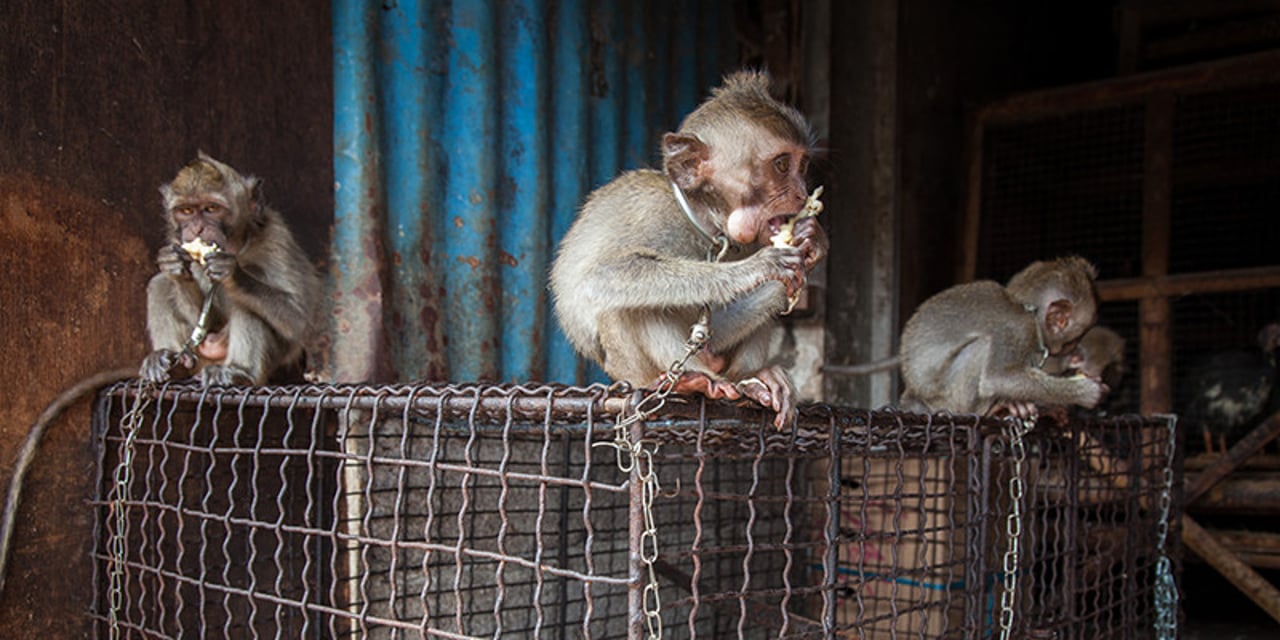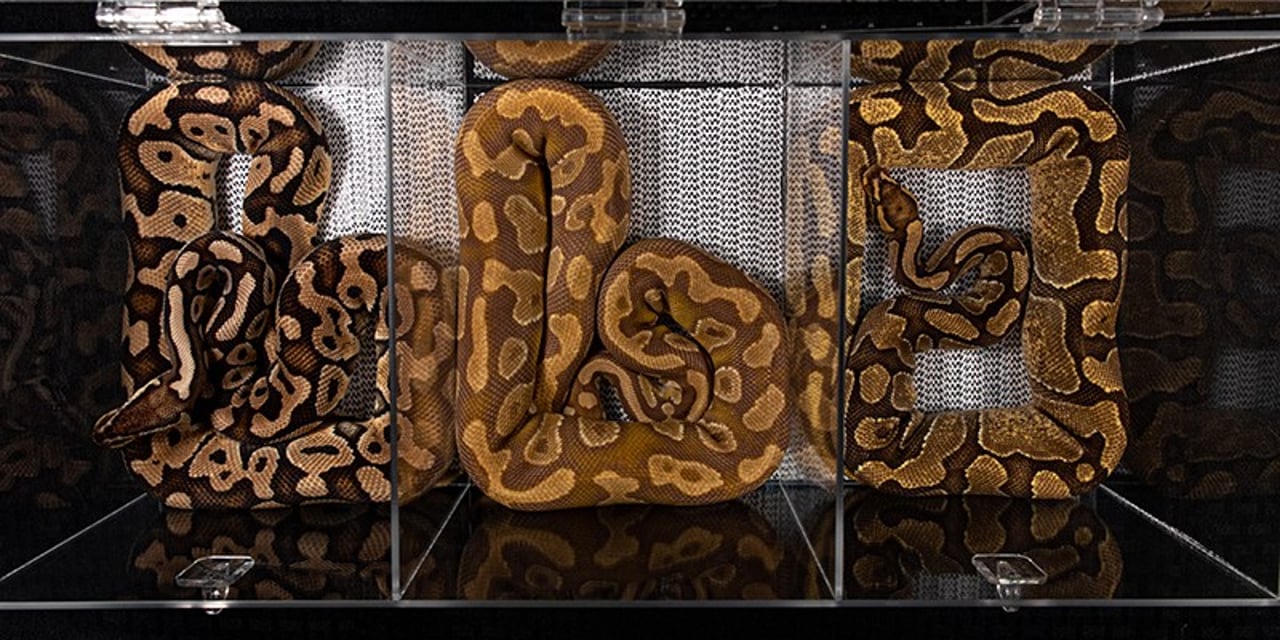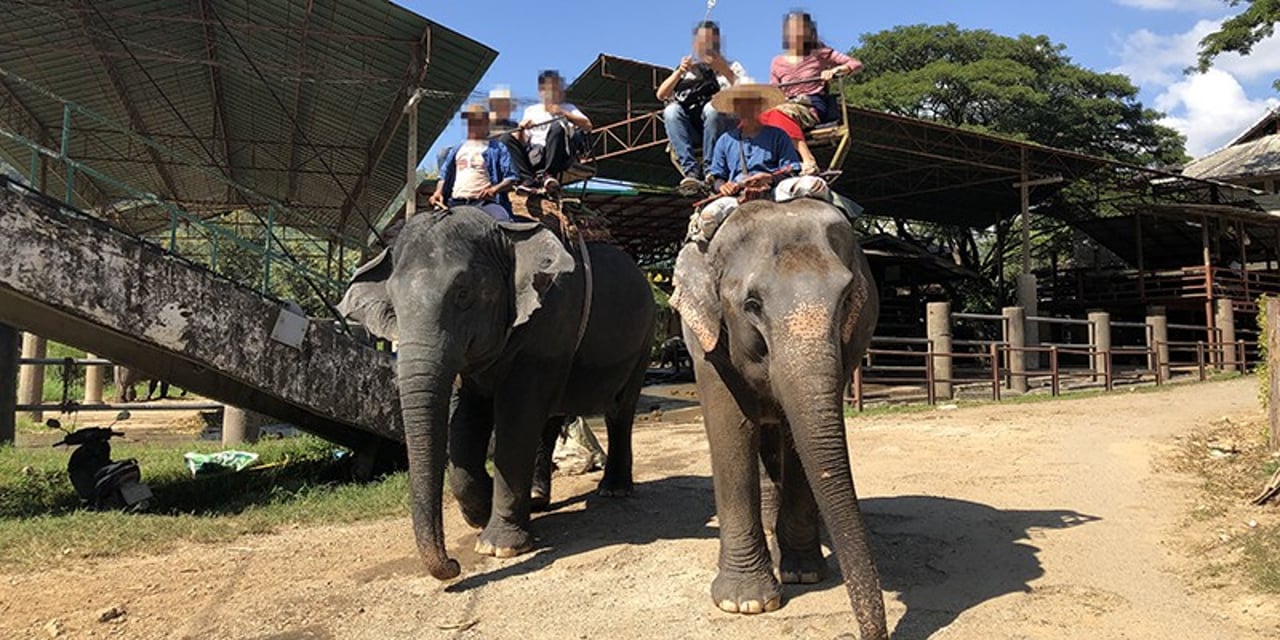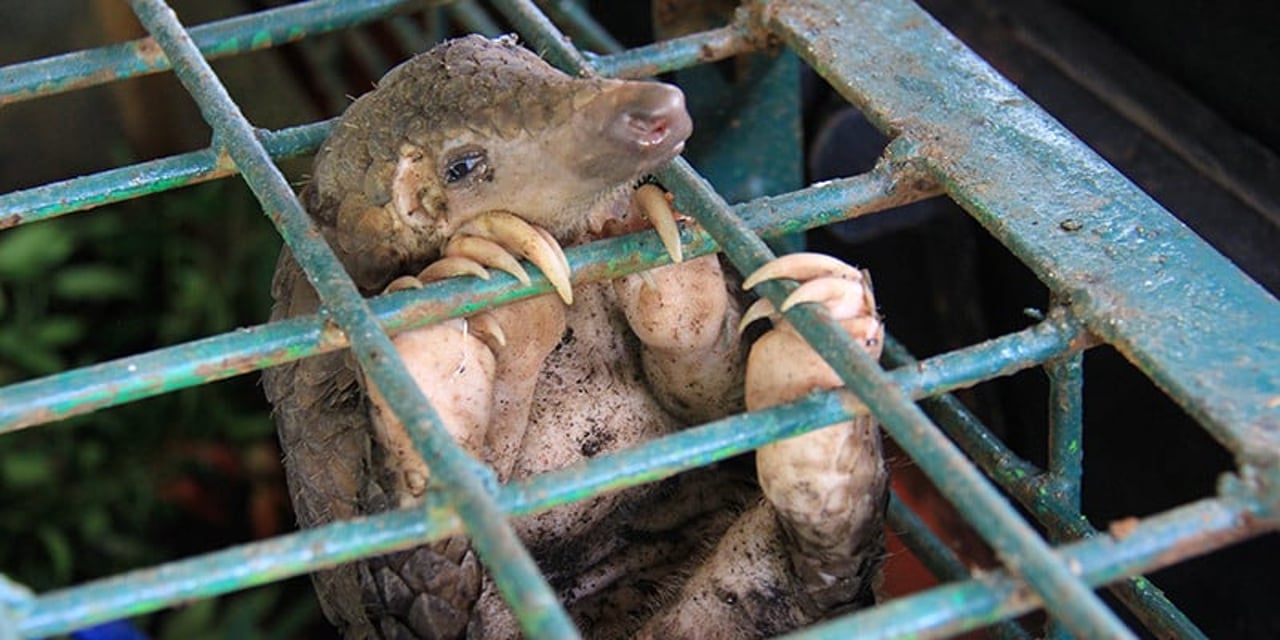
The COVID-19 pandemic is believed to have originated in a 'wet market' where wild animals were being sold. But these markets are part the global wildlife trade: a much bigger system that allows and encourages wild animals to be treated as commodities for the sake of profit
With the coronavirus pandemic affecting lives around the world, the global community is aware of the risks of wildlife trade now more than ever.
70% of emerging zoonotic diseases (transmittable from animals to humans) are thought to come from wild animals.
However, the problem is far bigger than markets in China. The pandemic is a symptom of a global trade (both legal and illegal) that is inherently cruel and dangerous. To meet consumer demand, millions of animals are exploited every day as part of the multi-billion dollar global wildlife trade.
Macaques for sale at the Denpasar Bird Market (Pasar Burung) in Bali, Indonesia. Photo credit: Nicky Loh/Getty Images for World Animal Protection
Wild animals as pets
The global trade of live, wild animals to be kept as 'exotic pets', such as ball pythons, Horsefield's tortoises, and even primates like squirrel monkeys and capuchins, is happening on an industrial scale.
According to data from the CITES trade database, thousands of species of wild animals are traded globally every year - all within the limits of the law:
- Over 500 species of bird (approximately half of which are parrots)
- Almost 500 species of reptile (mostly turtles, lizards and snakes)
- Over 100 species of mammal
The exotic pet trade is a major driver behind this exploitative business.
Our recent research indicates that there are over 17 million exotic pets in the US and 1.4 million in Canada.
Exotic pets are often taken from the wild or intensively captive-bred in conditions that risk their psychological and physical wellbeing. The methods used to snatch these animals from their natural habitats are often extremely distressing for animals and can cause injury and even death. The animals that survive can face long and perilous journeys – often crammed into tiny containers without basic access to food or water.
Captive breeding is often claimed to help with conservation by preventing capture of animals from the wild. But by sustaining demand for exotic pets, this in turn encourages animals to be taken from the wild. Regardless of how they are sourced, ‘exotic’ animals retain their wild instincts – their full range of needs which can never be met in people’s homes.
Pythons sold at a reptile fair in the USA. Photo credit: Aaron Gekoski
Wild animals in entertainment
Animals such as elephants, tigers, whales and dolphins suffer at venues across the world in the name of entertainment.
Behind closed doors, animals may be subject to other cruel training methods. They are used for circus-style tricks, rides or as a prop for selfies to meet the demand from tourists around the world.
In venues across the world, thousands of wild animals are imprisoned:
- Over 3,000 dolphins are held captive in entertainment venues across the world
- Over 8,000 tigers kept in breeding facilities across Asia
- Over 2,200 elephants abused for tourism in Thailand alone
Elephants being exploited for tourist rides in Chiang Mai, Thailand
Wild animals as medicine
The traditional medicine industry is worth an estimated 60 billion US dollars a year, spanning across 180 countries.
Despite CITES regulation barring or restricting the commercial trade of some species, animals such as rhinos, elephants and tigers are being poached for use in Traditional Medicine at an alarming rate. Many species have been pushed to the brink of extinction, including pangolins – the most traded and poached mammal in the world.
If nothing changes, these animals could disappear forever.
Commercial wild animal ‘farms’ have emerged around the world to meet the demand for products containing wild animals. Not only are they inherently cruel, but they are also unnecessary. The scientific evidence of the efficacy of treatments derived from animal products is not only lacking, but plant-based alternatives are available.
Animals in wildlife farms suffer throughout their lives. They can develop infections, diseases and acute psychological distress from the torturous routine and terrible conditions they are kept in.
A seized pangolin at the Natural Resources Conservation Center Riau, Indonesia
Join our movement
Sign up to our newsletter to stay up to date with our fight to end the cruel wildlife trade and our other vital campaigns protecting animals across the world:



